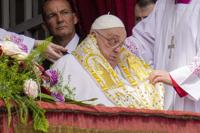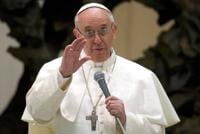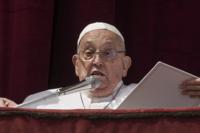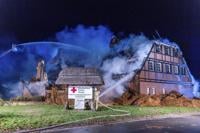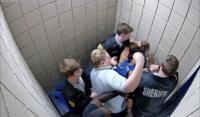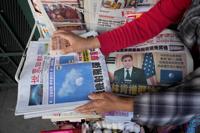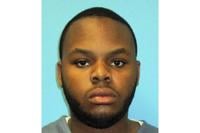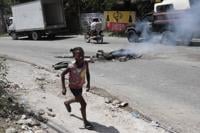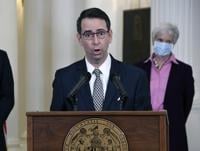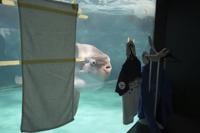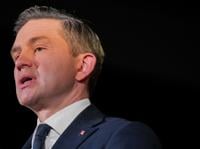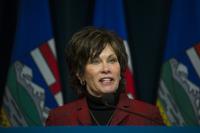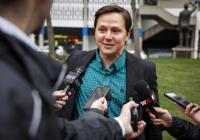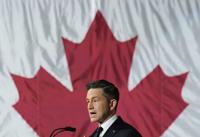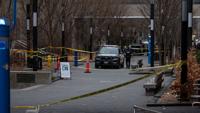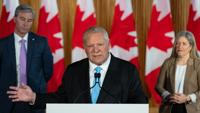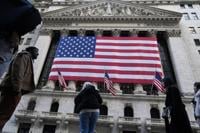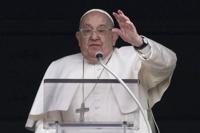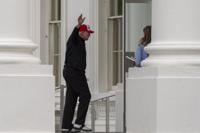VATICAN CITY (AP) — Pope Francis died on Easter Monday at the age of 88. Here are the key things to know about the death of the Argentine pontiff, history's first from Latin America, who presided over the Catholic Church for more than 12 years.
The timing of Pope Francis’ death
The death of Francis was , the Irish-born Vatican camerlengo, a position that will be important in the coming weeks as he takes charge of the administration of the Holy See until a new pope is elected.
Farrell made the announcement at 9:47 a.m., just over two hours after Francis had died. Farrell spoke from Domus Santa Marta, the apartment on Vatican grounds where Francis lived and where he had returned to recover less than a month after being hospitalized for double pneumonia.
“At 7:35 this morning, the Bishop of Rome, Francis, returned to the home of the Father," Farrell said. “His entire life was dedicated to the service of the Lord and of his Church.”
A final farewell on Easter Sunday
Francis made his final public appearance a day earlier on Easter Sunday, though he had of the Easter Mass to another cardinal.
He blessed a crowd of faithful from the loggia of St. Peter's Basilica. “Brothers and sisters, Happy Easter,” he said from the same loggia where Jorge Mario Bergoglio was introduced to the world on March 13, 2013 as the 266th pope.
Francis also made a surprise ride in the square in his popemobile, drawing wild cheers and applause.
Beforehand, he met briefly with .
“I was happy to see him yesterday, though he was obviously very ill," Vance, who converted to Catholicism in 2019, said on Monday during a visit to India.
Reactions and global mourning
Even before the great bells of St. Peter’s Basilica began tolling to mark Francis’ death, began pouring in from across the world.
Catholic and non-Catholic leaders alike honored a spiritual leader who was a voice for the marginalized and the weak, for migrants and LGBTQ+ people, and who showed concern for nature.
He “cared about the great global challenges of our time — migration, climate change, inequalities, peace — as well as the everyday struggles of the one and all,” European Council President António Costa said.
The outgoing German chancellor, Olaf Scholz, said that the world had lost "an advocate for the weak, a reconciling and a warm-hearted person.”
Other religious leaders also praised him for seeking dialogue. The head of the Church of England remembered him for his commitment to improving relations among the world’s religions, while Rome's chief rabbi described Francis' pontificate as an important new chapter in relations between Judaism and Catholicism.
The pope's last months, and final day
Francis, who suffered from chronic lung disease and had part of one lung removed as a young man, was admitted to Gemelli hospital in Rome on Feb. 14, 2025, for a respiratory crisis that developed into double pneumonia. He spent 38 days there, the longest hospitalization of .
For the faithful, those were weeks of fear that his illness could be fatal or lead to another papal resignation after that of Pope Benedict XVI, a surprise move that led to the election of Francis.
The pontiff's on March 23 brought relief to many at the time.
Mourning, funeral and then a conclave
Francis' death now sets off of allowing the faithful to pay their final respects, first for Vatican officials in the Santa Marta chapel and then in St. Peter’s for the general public.
A precise sequence of events will include the confirmation of death in the pontiff’s home, the transfer of the coffin to St. Peter’s Basilica for public viewing, a funeral Mass and burial.
The dates haven't been announced yet, but the burial must take place between the fourth and sixth day after his death.
After the funeral, there are nine days of official mourning, known as the “novendiali.”
During this period, cardinals arrive in Rome to participate in a conclave to elect the next pope.
To give everyone time to assemble, the conclave must begin 15-20 days after the “sede vacante” — the “vacant See” — is declared, although it can start sooner if the cardinals agree.
The cardinals will vote in secret sessions, and after each voting sessions, the ballots will be burned in a special stove. Black smoke will indicate that no pope has been elected, while white smoke will indicate that the cardinals have chosen the next head of the Catholic Church.
___
Vanessa Gera reported from Warsaw, Poland. Colleen Barry contributed to this report from Milan.


